Mississippi Today
Millions in opioid settlement dollars are coming to Mississippi. Here’s what you need to know.

Hundreds of Mississippians die every year from opioid overdoses, an epidemic that has claimed the lives of tens of thousands more nationwide. In a series of historic settlement agreements, pharmaceutical companies agreed to pay about $50 billion over 18 years for their role in fueling the crisis — and Mississippi has signed on to be part of the settlements.
How the state and local governments choose to use this cash windfall in the years ahead will significantly shape Mississippi’s policies toward addiction treatment and prevention — as well as health care in general.
We’ve broken down the key things you need to know about the settlements.
Where Is the Money Going?
Mississippi has begun to receive portions of the approximately $203 million it expects from national settlements with three pharmaceutical distributors and one opioid manufacturer. The state also expects an estimated additional $167 million from national opioid settlements with other companies.
The money is split into three buckets: 15% goes to the state government; another 15% to counties and cities, which will be distributed based on population and how heavily the crisis has affected those communities; and the remaining 70% to an opioid abatement fund that will be controlled by the state Legislature.
!function(){“use strict”;window.addEventListener(“message”,(function(a){if(void 0!==a.data[“datawrapper-height”]){var e=document.querySelectorAll(“iframe”);for(var t in a.data[“datawrapper-height”])for(var r=0;r<e.length;r++)if(e[r].contentWindow===a.source){var i=a.data["datawrapper-height"][t]+"px";e[r].style.height=i}}}))}();
Policymakers and local officials are starting to develop plans for how to use these dollars. The opioid agreements set out guidelines for spending, including nine core opioid abatement strategies — which consist of activities like broadening access to naloxone and medications for opioid use disorder, as well as investing in prevention efforts.
Who Is Controlling the Money in Mississippi?
Both the state government’s share and the abatement fund will be under the direct control of the Legislature, which will ultimately decide how that money gets spent. The Legislature, through an appropriations act, has set up a special account for all of the funds it controls.
“We were encouraged by the fact that they set (a fund) up, because that’s the first necessary step,” said Michelle Williams, chief of staff for state Attorney General Lynn Fitch. Advocates across the nation have recommended that states create special funds for the dollars they receive before making any decisions about how to use them.

To date, though, Mississippi’s state and abatement shares have been tapped only to cover attorneys fees from the opioid litigations, according to Williams. Across the country, many jurisdictions have been slow to spend their funds.
The attorney general’s office, which helped negotiate the settlements on behalf of Mississippi, has already signaled some priorities for the money. One is to establish a Center for Addiction Medicine at the University of Mississippi Medical Center — an idea mentioned in an agreement the office reached with cities and counties. The creation and operation of this center would be supported by the abatement fund — the largest pot of settlement dollars. Lawmakers have not widely discussed the proposal, however, and confusion surrounds plan specifics.
According to Williams, the concept arose from conversations with UMMC and members of the Legislature. The attorney general’s office provided a document that explains why this new center should receive millions in settlement funds.
That’s where any cohesion in Mississippi’s planning seems to begin and end. UMMC, for instance, declined to confirm any communication with the attorney general’s office about the idea of a new center or answer any questions about the proposal. The system already operates a center that focuses on addiction research and treatment.
According to Leah Smith, deputy chief of staff for Lt. Gov. Delbert Hosemann, his office intends to meet with Mississippi state leaders and advocates “to establish a plan to be adopted by the Legislature when it next meets in January,” although the timeline is uncertain.
The Mississippi Association of Supervisors, whose purpose is to “support and educate county officials and others on topics and issues important to county governments,” reported not having developed a plan to support their members as they prepare to spend the money. By contrast, the Arkansas Municipal League and the Association of Arkansas Counties has created a joint fund that helps local governments there coordinate opioid abatement activities.
Mike Moore — the former Mississippi attorney general who spearheaded the landmark national tobacco master settlement agreement and has been involved in opioid litigation across several states — has concerns about the disjointed approach in Mississippi.
“If you’re just going to send checks out to every little city and county, I don’t know what encourages collaboration there,” he said.
How Has the Money Been Spent So Far?
Every eligible Mississippi county will receive a portion of the approximately $54 million set aside for localities. Choctaw, Montgomery, Sharkey, Webster, and Wilkinson counties were ineligible.
Dozens of cities and towns throughout the state will also be receiving funds, though the amount varies drastically. Gulfport is expected to receive nearly $4.5 million through 2038, the most of any locality in the state. During that same time, Diamondhead will receive about $92.
These payments may increase as the state finalizes settlements with additional companies.
!function(){“use strict”;window.addEventListener(“message”,(function(a){if(void 0!==a.data[“datawrapper-height”]){var e=document.querySelectorAll(“iframe”);for(var t in a.data[“datawrapper-height”])for(var r=0;r<e.length;r++)if(e[r].contentWindow===a.source){var i=a.data["datawrapper-height"][t]+"px";e[r].style.height=i}}}))}();
Gulfport is the state’s second-largest city, with a population of roughly 73,000. The coastal city has received at least $430,000 so far. Decisions about how the money is spent will be made by the City Council.
Gulfport councilmember Ella Holmes-Hines would like to see the money go to community organizations that serve people struggling with addiction and law enforcement officer training.
“The problem is how and why you got the money, so therefore you have to address the problem,” she said.
So far the city has used only $4,000, to fund a local Thanksgiving and Christmas meal-delivery program last year.
Few counties reported having concrete plans.
Harrison County Board of Supervisors President Marlin Ladner, for instance, said spending decisions may be made this budget season. Harrison County, where Gulfport is located, led the state in suspected overdose deaths and naloxone administrations in 2022. Similarly, Jackson County — which had the state’s highest number of suspected overdose deaths per 100,000 residents in 2023 — has yet to budget the funds, according to the County Administrator’s office.
At the other end of the state, the DeSoto County Board of Supervisors has committed the $116,000 it has received so far to fund a crisis center.
“It’s for immediate crisis — for if someone has an addiction problem or mental illness, or needs to come for counseling,” said Lee Caldwell, Board of Supervisors president. “DeSoto County likes to be first, but we don’t want to be first in opioid deaths. We don’t want to be first in the challenges that it brings to families because of addiction.”
What Are the Advocates Saying?
As the decision-makers wrestle with their next steps, people who see Mississippi’s opioid crisis firsthand say the need continues to be very real.
“My friends are dying in the streets. We have overdoses every day,” said Jason McCarty, executive director of the Mississippi Harm Reduction Initiative, a community organization that supports people struggling with and recovering from opioid addictions.
Part of the challenge he and other advocates face is keeping the state’s problem in focus.
Provisional data from The Mississippi Opioid and Heroin Data Collaborative indicates that at least 1,257 people died of suspected opioid-related causes from 2020 to 2023 — an average of 314 people a year. That’s lower than the death toll in many other places, he said, but not reflective of what’s happening.
“Mississippi doesn’t look like it actually has a problem compared to other states. But I know that we do,” McCarty said.
Some parts of the state have been hit harder than others. The coastal region stands out, in recent years representing an outsize portion of Mississippi’s suspected overdose deaths, emergency medical services naloxone administrations, and drug-related arrests.
!function(){“use strict”;window.addEventListener(“message”,(function(a){if(void 0!==a.data[“datawrapper-height”]){var e=document.querySelectorAll(“iframe”);for(var t in a.data[“datawrapper-height”])for(var r=0;r<e.length;r++)if(e[r].contentWindow===a.source){var i=a.data["datawrapper-height"][t]+"px";e[r].style.height=i}}}))}();
Grassroots organizations, McCarty said, should be first in line to receive settlement resources. The harm reduction initiative distributes naloxone, operates a recovery community center in Jackson, and does educational programming with Mississippi youth.
But in his experience, that’s not how the distribution of resources works.
“I feel like money keeps going to these big organizations who are really not doing grassroots work,” McCarty said.
McCarty and other advocates said it’s difficult to find out what’s going on with settlement funds. He said no one has contacted his organization for input on how the state should spend the money.
Jody Couch founded Inside Out Outreach, which works to provide faith-based support for the homeless population in Gulfport, many of whom have addictions. She believes the money could be best spent addressing the lack of housing and other resources in her area.
“That funding could help with the cost of getting treatment and for it to be local,” she said.
Couch has been contacted for input by at least one local official in Gulfport as the city prepares to decide how to spend its share of the opioid settlement funds.
She believes what the opioid settlement funds need most is oversight to ensure accountability about how the money is spent in her community.

But the state has not implemented public reporting requirements. Localities do not have to say how much money they have received or how it has been spent. There are also no requirements dictating how localities must use the money — they could use it to fill potholes.
Similar concerns about misuse are playing out nationally, but at the same time, there’s hope that the money can do good.
“History will be written. We’ll find out how well they do,” said Moore, the former Mississippi attorney general. “But my gut tells me that they’re going to be pretty serious about the money being spent in the right way.”
KFF Health News senior correspondent Aneri Pattani contributed to this report.
This report was produced through a collaboration between KFF Health News and Mississippi Today.
KFF Health News is a national newsroom that produces in-depth journalism about health issues and is one of the core operating programs at KFF — the independent source for health policy research, polling, and journalism.
This article first appeared on Mississippi Today and is republished here under a Creative Commons license.![]()
Mississippi Today
On this day in 1898

Feb. 22, 1898

Frazier Baker, the first Black postmaster of the small town of Lake City, South Carolina, and his baby daughter, Julia, were killed, and his wife and three other daughters were injured when a lynch mob attacked.
When President William McKinley appointed Baker the previous year, local whites began to attack Baker’s abilities. Postal inspectors determined the accusations were unfounded, but that didn’t halt those determined to destroy him.
Hundreds of whites set fire to the post office, where the Bakers lived, and reportedly fired up to 100 bullets into their home. Outraged citizens in town wrote a resolution describing the attack and 25 years of “lawlessness” and “bloody butchery” in the area.
Crusading journalist Ida B. Wells wrote the White House about the attack, noting that the family was now in the Black hospital in Charleston “and when they recover sufficiently to be discharged, they) have no dollar with which to buy food, shelter or raiment.
McKinley ordered an investigation that led to charges against 13 men, but no one was ever convicted. The family left South Carolina for Boston, and later that year, the first nationwide civil rights organization in the U.S., the National Afro-American Council, was formed.
In 2019, the Lake City post office was renamed to honor Frazier Baker.
“We, as a family, are glad that the recognition of this painful event finally happened,” his great-niece, Dr. Fostenia Baker said. “It’s long overdue.”
This article first appeared on Mississippi Today and is republished here under a Creative Commons license.![]()
Mississippi Today
Memorial Health System takes over Biloxi hospital, what will change?

by Justin Glowacki with contributions from Rasheed Ambrose, Javion Henry, McKenna Klamm, Matt Martin and Aidan Tarrant
BILOXI – On Feb. 1, Memorial Health System officially took over Merit Health Biloxi, solidifying its position as the dominant healthcare provider in the region. According to Fitch Ratings, Memorial now controls more than 85% of the local health care market.
This isn’t Memorial’s first hospital acquisition. In 2019, it took over Stone County Hospital and expanded services. Memorial considers that transition a success and expects similar results in Biloxi.
However, health care experts caution that when one provider dominates a market, it can lead to higher prices and fewer options for patients.
Expanding specialty care and services
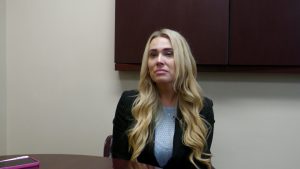
One of the biggest benefits of the acquisition, according to Kristian Spear, the new administrator of Memorial Hospital Biloxi, will be access to Memorial’s referral network.
By joining Memorial’s network, Biloxi patients will have access to more services, over 40 specialties and over 100 clinics.
“Everything that you can get at Gulfport, you will have access to here through the referral system,” Spear said.
One of the first improvements will be the reopening of the Radiation Oncology Clinic at Cedar Lake, which previously shut down due to “availability shortages,” though hospital administration did not expand on what that entailed.
“In the next few months, the community will see a difference,” Spear said. “We’re going to bring resources here that they haven’t had.”
Beyond specialty care, Memorial is also expanding hospital services and increasing capacity. Angela Benda, director of quality and performance improvement at Memorial Hospital Biloxi, said the hospital is focused on growth.
“We’re a 153-bed hospital, and we average a census of right now about 30 to 40 a day. It’s not that much, and so, the plan is just to grow and give more services,” Benda said. “So, we’re going to expand on the fifth floor, open up more beds, more admissions, more surgeries, more provider presence, especially around the specialties like cardiology and OB-GYN and just a few others like that.”
For patient Kenneth Pritchett, a Biloxi resident for over 30 years, those changes couldn’t come soon enough.
Pritchett, who was diagnosed with congestive heart failure, received treatment at Merit Health Biloxi. He currently sees a cardiologist in Cedar Lake, a 15-minute drive on the interstate. He says having a cardiologist in Biloxi would make a difference.
“Yes, it’d be very helpful if it was closer,” Pritchett said. “That’d be right across the track instead of going on the interstate.”
Beyond specialty services and expanded capacity, Memorial is upgrading medical equipment and renovating the hospital to improve both function and appearance. As far as a timeline for these changes, Memorial said, “We are taking time to assess the needs and will make adjustments that make sense for patient care and employee workflow as time and budget allow.”
Unanswered questions: insurance and staffing
As Memorial Health System takes over Merit Health Biloxi, two major questions remain:
- Will patients still be covered under the same insurance plans?
- Will current hospital staff keep their jobs?
Insurance Concerns
Memorial has not finalized agreements with all insurance providers and has not provided a timeline for when those agreements will be in place.
In a statement, the hospital said:
“Memorial recommends that patients contact their insurance provider to get their specific coverage questions answered. However, patients should always seek to get the care they need, and Memorial will work through the financial process with the payers and the patients afterward.”
We asked Memorial Health System how the insurance agreements were handled after it acquired Stone County Hospital. They said they had “no additional input.”
What about hospital staff?
According to Spear, Merit Health Biloxi had around 500 employees.
“A lot of the employees here have worked here for many, many years. They’re very loyal. I want to continue that, and I want them to come to me when they have any concerns, questions, and I want to work with this team together,” Spear said.
She explained that there will be a 90-day transitional period where all employees are integrated into Memorial Health System’s software.
“Employees are not going to notice much of a difference. They’re still going to come to work. They’re going to do their day-to-day job. Over the next few months, we will probably do some transitioning of their computer system. But that’s not going to be right away.”
The transition to new ownership also means Memorial will evaluate how the hospital is operated and determine if changes need to be made.
“As we get it and assess the different workflows and the different policies, there will be some changes to that over time. Just it’s going to take time to get in here and figure that out.”
During this 90-day period, Erin Rosetti, Communications Manager at Memorial Health System said, “Biloxi employees in good standing will transition to Memorial at the same pay rate and equivalent job title.”
Kent Nicaud, President and CEO of Memorial Health System, said in a statement that the hospital is committed to “supporting our staff and ensuring they are aligned with the long-term vision of our health system.”
What research says about hospital consolidations
While Memorial is promising improvements, larger trends in hospital mergers raise important questions.
Research published by the Rand Corporation, a nonprofit, nonpartisan research organization, found that research into hospital consolidations reported increased prices anywhere from 3.9% to 65%, even among nonprofit hospitals.
The impact on patient care is mixed. Some studies suggest merging hospitals can streamline services and improve efficiency. Others indicate mergers reduce competition, which can drive up costs without necessarily improving care.
When asked about potential changes to the cost of care, hospital leaders declined to comment until after negations with insurance companies are finalized, but did clarify Memorial’s “prices are set.”
“We have a proven record of being able to go into institutions and transform them,” said Angie Juzang, Vice President of Marketing and Community Relations at Memorial Health System.
When Memorial acquired Stone County Hospital, it expanded the emergency room to provide 24/7 emergency room coverage and renovated the interior.
When asked whether prices increased after the Stone County acquisition, Memorial responded:
“Our presence has expanded access to health care for everyone in Stone County and the surrounding communities. We are providing quality healthcare, regardless of a patient’s ability to pay.”
The response did not directly address whether prices went up — leaving the question unanswered.
The bigger picture: Hospital consolidations on the rise
According to health care consulting firm Kaufman Hall, hospital mergers and acquisitions are returning to pre-pandemic levels and are expected to increase through 2025.
Hospitals are seeking stronger financial partnerships to help expand services and remain stable in an uncertain health care market.
Source: Kaufman Hall M&A Review
Proponents of hospital consolidations argue mergers help hospitals operate more efficiently by:
- Sharing resources.
- Reducing overhead costs.
- Negotiating better supply pricing.
However, opponents warn few competitors in a market can:
- Reduce incentives to lower prices.
- Slow wage increases for hospital staff.
- Lessen the pressure to improve services.
Leemore Dafny, PhD, a professor at Harvard and former deputy director for health care and antitrust at the Federal Trade Commission’s Bureau of Economics, has studied hospital consolidations extensively.
In testimony before Congress, she warned: “When rivals merge, prices increase, and there’s scant evidence of improvements in the quality of care that patients receive. There is also a fair amount of evidence that quality of care decreases.”
Meanwhile, an American Hospital Association analysis found consolidations lead to a 3.3% reduction in annual operating expenses and a 3.7% reduction in revenue per patient.
This article first appeared on Mississippi Today and is republished here under a Creative Commons license.![]()
Mississippi Today
Adopted people face barriers obtaining birth certificates. Some lawmakers point to murky opposition from judges

When Judi Cox was 18, she began searching for her biological mother. Two weeks later she discovered her mother had already died.
Cox, 41, was born in Gulfport. Her mother was 15 and her father didn’t know he had a child. He would discover his daughter’s existence only when, as an adult, she took an ancestry test and matched with his niece.
It was this opaque family history, its details coming to light through a convergence of tragedy and happenstance, that led Cox to seek stronger legal protections for adopted people in Mississippi. Ensuring adopted people have access to their birth certificates has been a central pillar of her advocacy on behalf of adoptees. But legislative proposals to advance such protections have died for years, including this year.
Cox said the failure is an example of discrimination against adopted people in Mississippi — where adoption has been championed as a reprieve for mothers forced into giving birth as a result of the state’s abortion ban.
“A lot of people think it’s about search and reunion, and it’s not. It’s about having equal rights. I mean, everybody else has their birth certificate,” Cox said. “Why should we be denied ours?”
Mississippi lawmakers who have pushed unsuccessfully for legislation to guarantee adoptees access to their birth certificate have said, in private emails to Cox and interviews with Mississippi Today, that opposition comes from judges.
“There are a few judges that oppose the bill from what I’ve heard,” wrote Republican Sen. Angela Hill in a 2023 email.
Hill was recounting opposition to a bill that died during the 2023 legislative session, but a similar measure in 2025 met the same fate. In an interview this month, Hill said she believed the political opposition to the legislation could be bound up with personal interest.
“Somebody in a high place doesn’t want an adoption unsealed,” Hill said. “I don’t know who we’re protecting from somebody finding their birth parents,” Hill said. “But it leads you to believe some people have a very strong interest in keeping adoption records sealed. Unless it’s personal, I don’t understand it.”
In another 2023 email to Cox reviewed by Mississippi Today, Republican Rep. Lee Yancey wrote that some were concerned the bill “might be a deterrent to adoption if their identities were disclosed.”
The 2023 legislative session was the first time a proposal to guarantee adoptees access to their birth certificates was introduced under the state’s new legal landscape surrounding abortion.
In 2018, Mississippi enacted a law that banned most abortions after 15 weeks. The state’s only abortion clinic challenged the law, and that became the case that the U.S. Supreme Court used in 2022 to overturn Roe v. Wade, its landmark 1973 ruling that established a nationwide right to abortion.
Roe v. Wade had rested in part on a woman’s right to privacy, a legal framework Mississippi’s Solicitor General successfully undermined in Dobbs v. Jackson Women’s Health Organization. Before that ruling, anti-abortion advocates had feared allowing adoptees to obtain their birth certificates could push women toward abortion rather than adoption.
Abortion would look like a better option for parents who feared future contact or disclosure of their identities, the argument went. With legal access to abortion a thing of the past in Mississippi, Cox said she sees a contradiction.
“Mississippi does not recognize privacy in that matter, as far as abortions and all that. So if you don’t acknowledge it in an abortion setting, how can you do it in an adoption setting?” Cox said. “You can’t pick and choose whether you’re going to protect my privacy.”
Opponents to legislation easing access to birth certificates for adoptees have also argued that such proposals would unfairly override previous affidavits filed by birth parents requesting privacy.
The 2025 bill, proposed by Republican Rep. Billy Calvert, would direct the state Bureau of Vital Records to issue adoptees aged 21 and older a copy of their original birth certificate.
The bill would also have required the Bureau to prepare a form parents could use to indicate their preferences regarding contact from an adoptee. That provision, along with existing laws that guard against stalking, would give adoptees access to their birth certificate while protecting parents who don’t wish to be contacted, Cox said.
In 2021, Cox tried to get a copy of her birth certificate. She asked Lauderdale County Chancery Judge Charlie Smith, who is now retired, to unseal her adoption records. The Judge refused because Cox had already learned the identity of her biological parents, emails show.
“With the information that you already have, Judge Smith sees no reason to grant the request to open the sealed adoption records at this time,” wrote Tawanna Wright, administrator for the 12th District Chancery Court in Meridian. “If you would like to formally file a motion and request a hearing, you are certainly welcome to do so.”
In her case and others, judges often rely on a subjective definition of what constitutes a “good cause” for unsealing records, Cox said. Going through the current legal process for unsealing records can be costly, and adoptees can’t always control when and how they learn the identity of their biological parents, Cox added.
After Cox’s biological mother died, her biological uncle was going through her things and came across the phone number for Cox’s adoptive parents. He called them.
“My adoptive mom then called to tell me the news — just hours after learning I was expecting my first child,” Cox said.
This article first appeared on Mississippi Today and is republished here under a Creative Commons license.![]()
-

 News from the South - Louisiana News Feed2 days ago
News from the South - Louisiana News Feed2 days agoJeff Landry’s budget includes cuts to Louisiana’s domestic violence shelter funding
-

 News from the South - North Carolina News Feed6 days ago
News from the South - North Carolina News Feed6 days agoModest drops in some North Carolina prices under Trump | North Carolina
-

 News from the South - Texas News Feed7 days ago
News from the South - Texas News Feed7 days agoA developer bought up 70 properties on a historically Black street. The community doesn't know what's next
-

 News from the South - Arkansas News Feed6 days ago
News from the South - Arkansas News Feed6 days agoTiming out the incoming winter weather
-

 News from the South - Arkansas News Feed7 days ago
News from the South - Arkansas News Feed7 days agoFrigid Sunday conditions in Northwest Arkansas
-

 News from the South - Oklahoma News Feed4 days ago
News from the South - Oklahoma News Feed4 days agoRemains of Aubrey Dameron found, family gathers in her honor
-

 News from the South - Kentucky News Feed6 days ago
News from the South - Kentucky News Feed6 days agoEight die in flooding across Kentucky as rescues continue, governor warns of ‘wild weather week’
-

 News from the South - South Carolina News Feed5 days ago
News from the South - South Carolina News Feed5 days agoSC Flu cases on the rise: Prisma Health Doctors speak out on how to spot symptoms, get treatment







